Persimmons are sweet, delicious, and have a unique flavor that you just can’t beat. As most people don’t cook or bake with persimmon regularly, this expert guide has tips, tricks, FAQs, and recipes to help you master this amazing fruit!
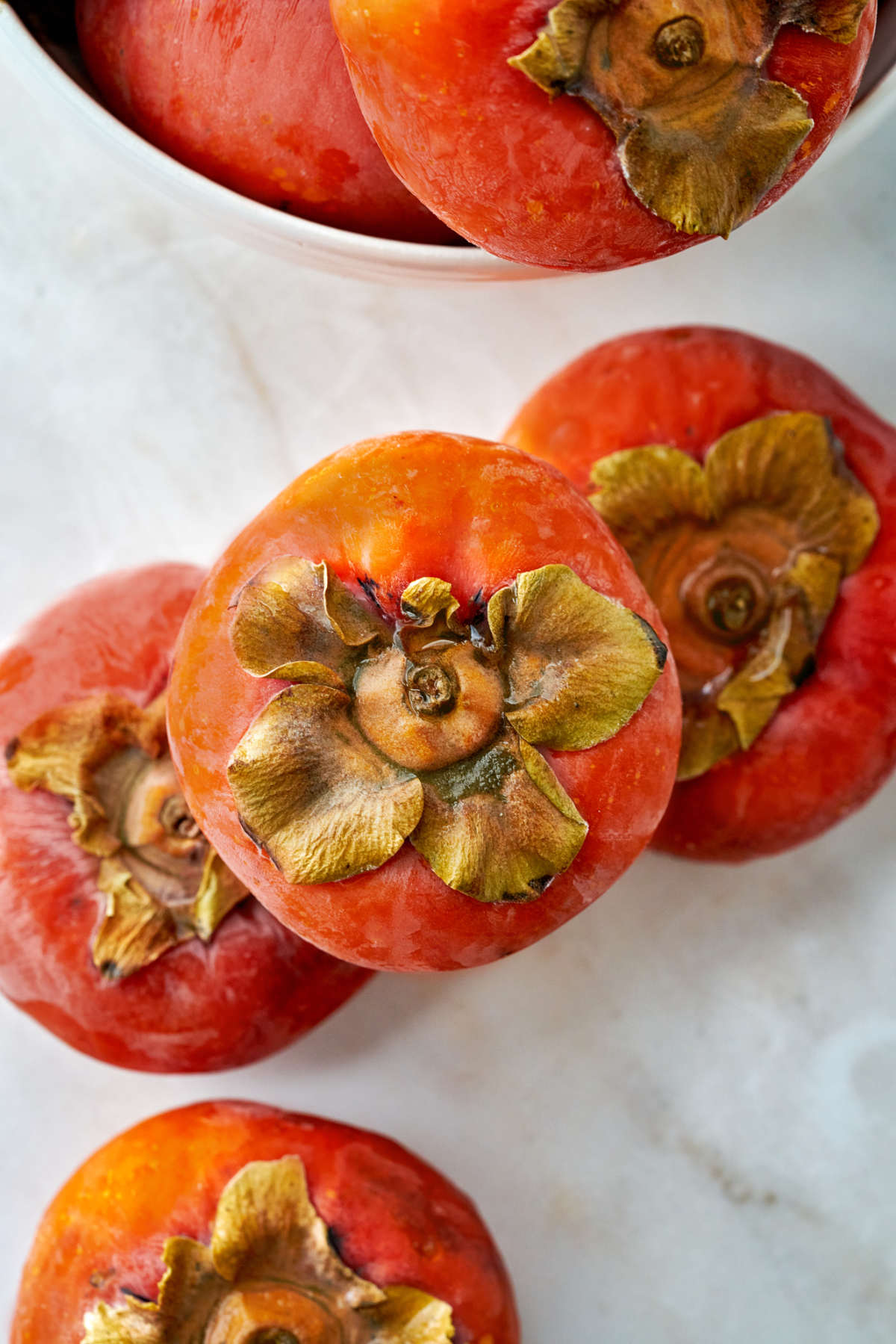
🗒️ Persimmon Basics You Need to Know
Persimmons are round, juicy, light to deep orange fruits that are mostly grown in China, South Korea, and Japan. You can find two main varieties at grocery stores, Fuyu (non-astringent) and Hachiya (astringent), and are often compared to fruits like apricots or plums.
When are Persimmons in Season?
Once the fall comes these beautiful tasty fruits can be found in supermarkets or at farmers’ markets, and I highly recommend taking advantage of them when they’re available. They are only in season for a short while, beginning in October and going out of season in January.
What is the Difference Between Fuyu and Hachiya Persimmons?
Fuyu persimmons are a non-astringent variety (meaning, crisp and slightly bitter like many fresh fruits and berries). Fuyu persimmons can be eaten under-ripe and raw, and I prefer to eat slightly under-ripe Fuyu persimmons as snacks on the go.
Hachiya persimmons are an astringent variety, and cannot be consumed until fully ripened. They are slightly larger than Fuyu, and these will NOT taste good if you eat them underripe.
Over-ripe Hachiya persimmons work best in baking recipes. As these ripen, they get sweeter and sweeter until they are perfect to use in your baking. I use them in my persimmon bread, persimmon cookies, and chocolate chip persimmon muffin recipes. I use sliced Fuyu persimmons in my persimmon and roasted radicchio salad recipe and persimmon tart.
How Can I Store Persimmons?
You can store persimmons at room temperature on your countertop if you intend to use them soon. It’s best to wait until they ripen by leaving them out on the countertop.
Fuyu persimmons have a firm texture like an apple when ripe enough to eat and continue to get softer. For Hachiya persimmons, when they’re very ripe they’re very pulpy and soft, like the texture of a water balloon.
👩🍳 How to Make Persimmon Puree
Almost all baking recipes that use persimmon will call for persimmon puree. You can achieve this easily by pulsing your very ripe and mushy persimmon insides (with the skins removed and discarded) in a blender or food processor until you have a smooth pulp. Use my step-by-step guide as you go.
1.
Persimmon Puree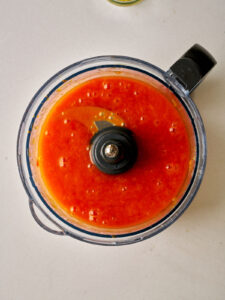
✨ Trick for Quickly Ripening Persimmons
If you’re not in a rush and have a few days, a trick is to leave them in a bag with an apple and/or banana to ripen faster.
If you’re shorter on time, this tip may seem counter-intuitive, but it works. Freeze your persimmons overnight, then let them thaw on your countertop at room temperature. As they defrost, they’ll be ready to go.
🌟Ripening is key for persimmons🌟
Remember, Hachiya persimmons will be squishy and jelly-like when ripe. They will be so mushy that you can press your finger into the fruit.
❄️ How to Preserve Your Persimmon for Later Baking
You can easily freeze your pureed persimmon pulp until it’s ready to be used. This is how I cook with persimmon all year round, not just when it’s in season.
Puree and transfer your ripe persimmons to a freezer container as I show below, which is portioned out so you can easily defrost only the amount you need when you’re ready to cook with them.
You can use anything from ice cube trays to silicone trays that have measurements where you can accurately divide your pulp, which makes it so much easier to portion out when the time comes to defrost.
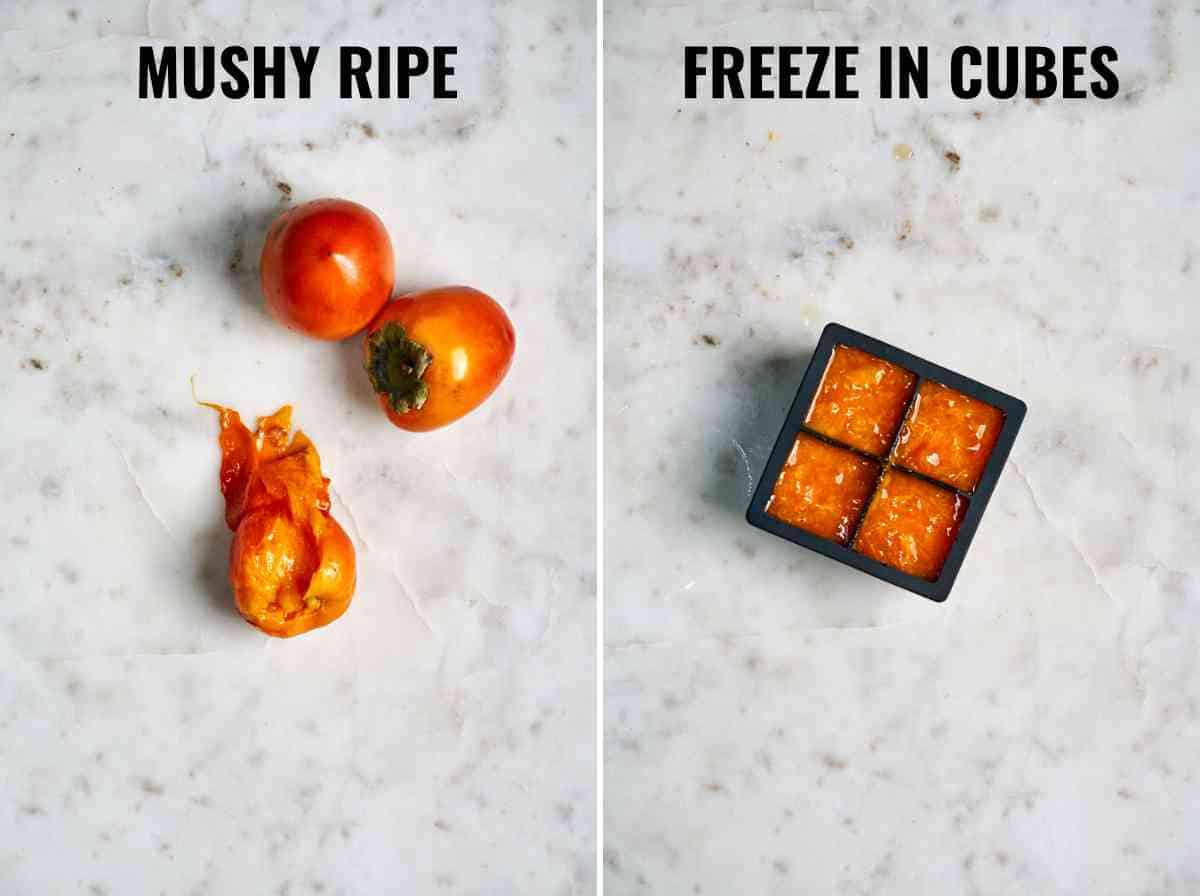
✅ Expert Tips for Persimmon Success
☝️ Top Persimmon FAQs
You can eat persimmons raw, though you have to eat Fuyu and Hachiya persimmons at different times. Fuyu persimmons can be eaten raw when they are hard and firm. Hachiya persimmons need to ripen more before you eat them.
It’s crucial to bake with very ripe and mushy persimmons for two reasons: 1. The riper they are, the sweeter they taste. 2. The mushy consistency in the persimmon is essential so that the persimmon can be properly and evenly distributed throughout your batter for recipes like persimmon bread and muffins.
Yes, when baking breads or muffins with persimmons, the batter will be wet and liquid-y similar to a banana bread texture. This is completely normal as persimmons add a lot of moisture to recipes.
Although it is best to peel these off and discard them before baking, it isn’t necessary since the skins are edible. The more peel you can remove, the smoother the texture of your baking batter.
🧡 Highly-rated persimmon recipes to try out
Now you’re a persimmon pro, put those skills to work with these perfect recipes.
Still want even MORE persimmon? I’ve got the recipe roundup for you!


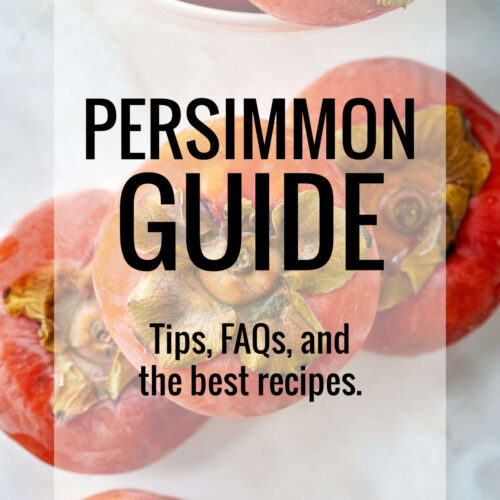
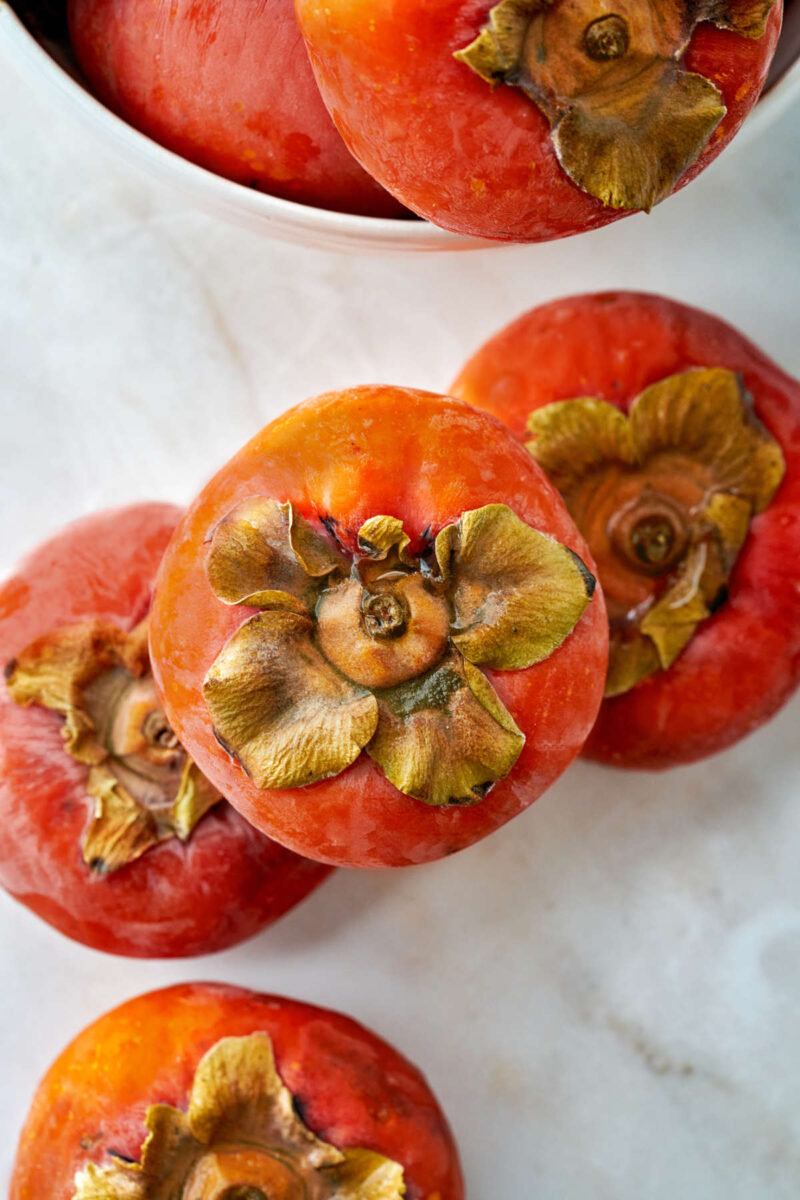
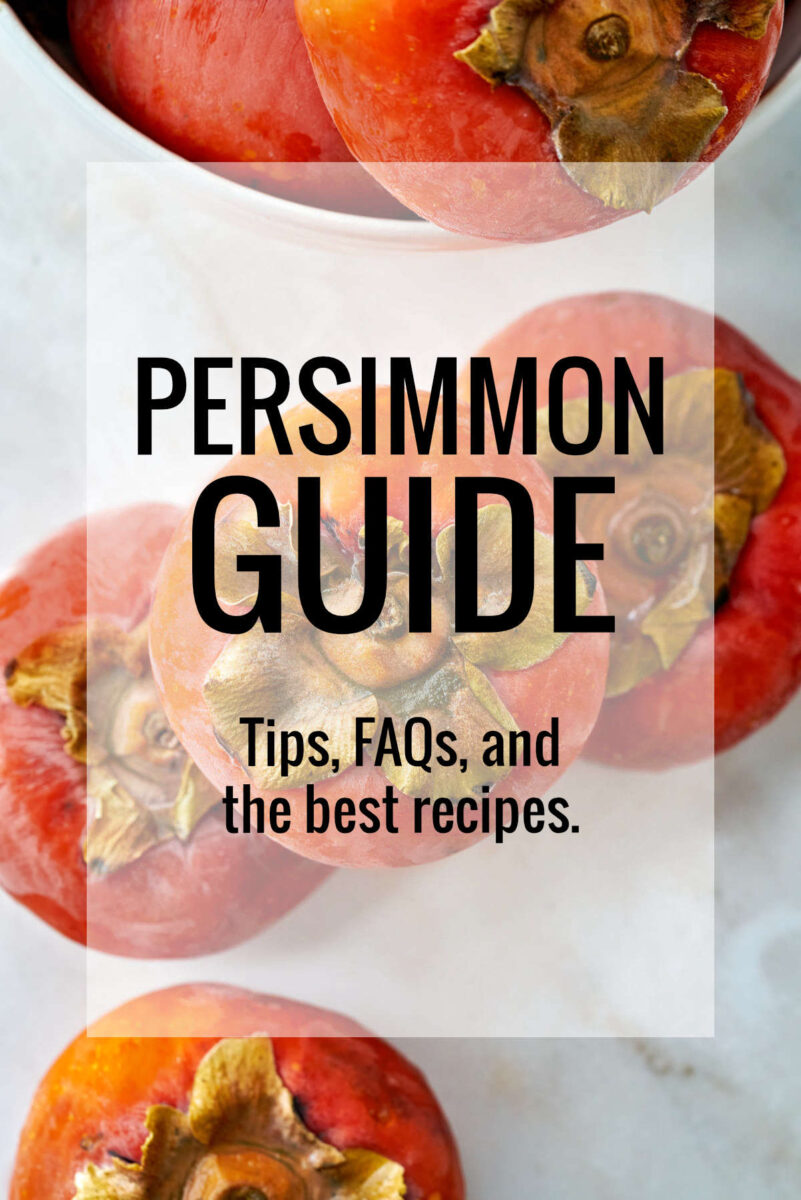

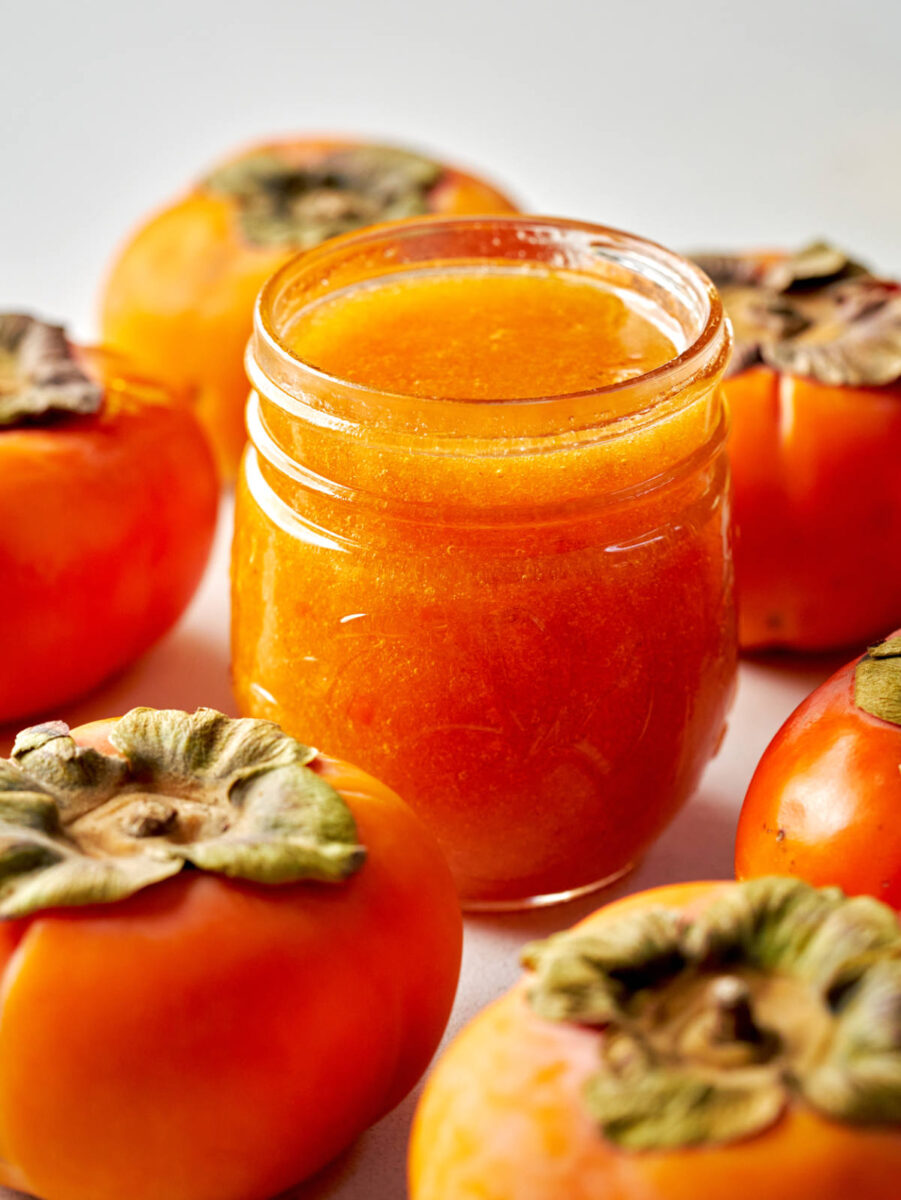
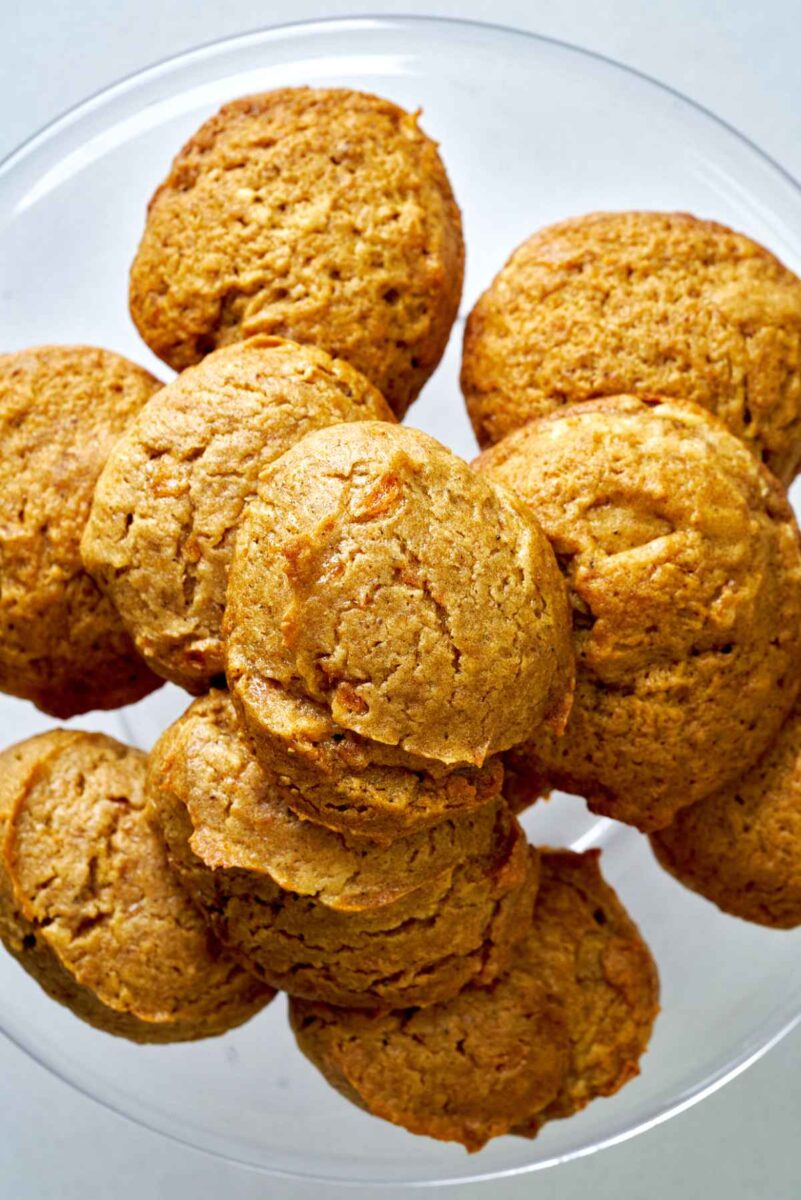

The Persimmon bread is delicious. I have made it twice now and shared your recipie
I’m so glad you like it, Marie… and thank you for sharing it!